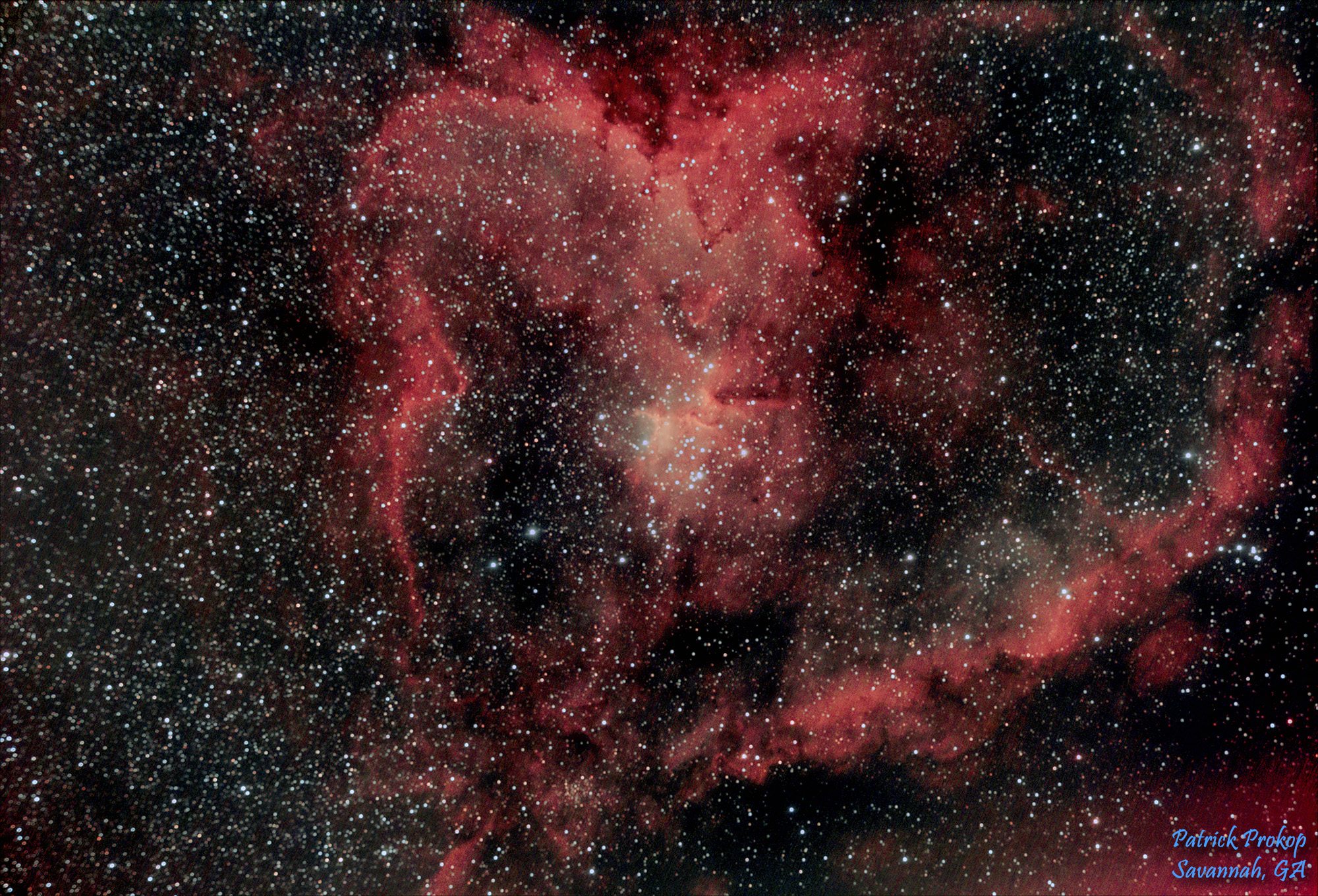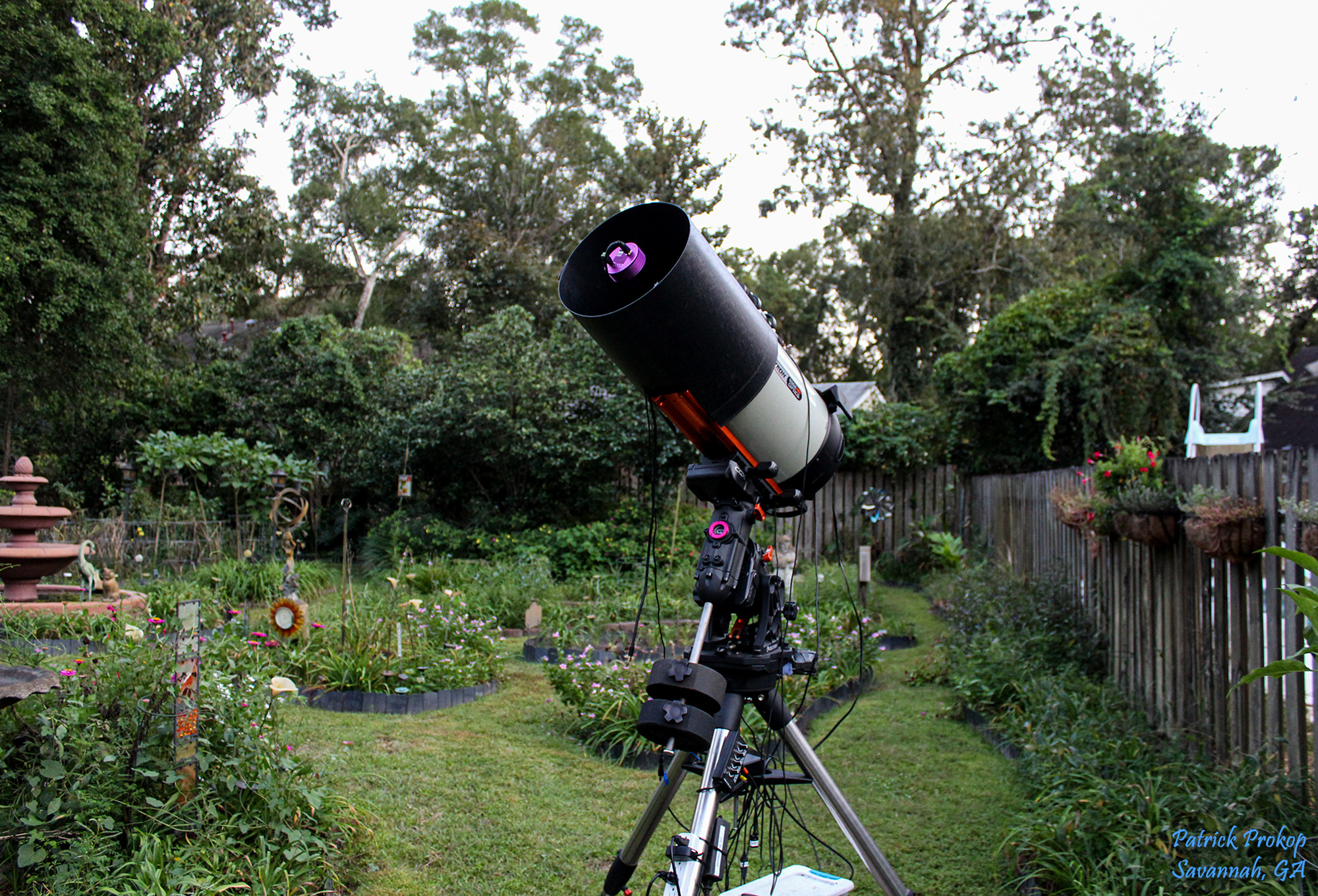
The Heart Nebula IC 1805
(Click on Picture for larger view)

Added October 4, 2019 ...
I took this 2 hour image on the night of Friday, October 4, 2019. Since it is such a large nebula, I used the Starizona HyperStarHD lens on the 11" Celestron Edge telescope greatly expanding the field of view from f/10 to f/2. The width of the nebula is about the size of 5 full moons side-by-side. (Without the Starizona lens, 1 full moon is larger than the field of view at f/10 on this scope!)
This large nebula is located in the Perseus Arm of the Galaxy in the constellation Cassiopeia high in the northern sky in October. It is about 7,500 light years away. The cluster within the bright core is also known as NGC (New General Catalog) 896. The nebula's intense red output and its configuration are driven by the radiation emanating from a small group of stars near the nebula's center. The shape of this nebula leads to its name. It is also known as IC 1805 and Sharpless 2-190
The Techy Stuff: (For those who want to know)
Telescope: Celestron 11" Edge HD
Field Reducer: Starizona HyperStar HD (f/2)
Camera: Altair Hypercam 294c Pro TEC
Filter: Altair QuadBand OSC CCD 2" Narrow Band
Camera Settings: 60 seconds at gain of 5,000 ... temp: 14F (-10C)
Capture Software: SharpCap Pro v3.2.6054 64 bit
Mount: Celestron CGX
Mount Control: Celestron PWI v2.2.3
Subframes: 120
Darks: 40
Bias: 40
Flats: 39
Guiding: Orion StarShoot AutoGuider Pro & 60mm Guide Scope
Guiding Software: PHD 2
Polar Alignment: QHY Pole Master
Stacking: Deep Sky Staker v4.2.2 64 bit
Post Procession: PixInsight & PhotoShop CC
Bortle Light Pollution zone: 4.5
Seeing Conditions: 9 (out of 10)
Temperature: 76F (24.4C), Dew Point 69F (20.5C)
Location: My Heavenly Garden Backyard, Savannah, GA

The Celestron Edge HD telescope with the Starizona HyperStarHD reducer lens attached along with the Altair Hypercam 294c Pro TEC camera. The equatorial mount is the Celestron CGX. (The magenta ring is the slot for the QHY Pole Master aligning scope). This rig is connected to my desktop computer inside via a USB2 extender via a 75 foot cat6 cable.
Return to Pat Prokop's Heavenly Backyard Astronomy Page